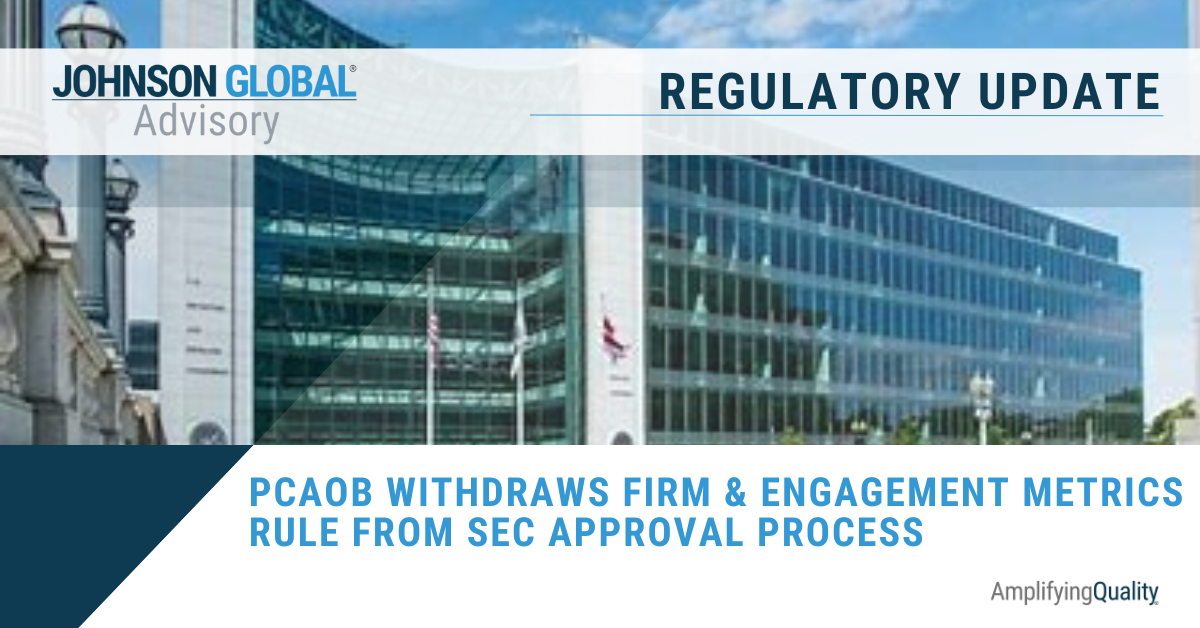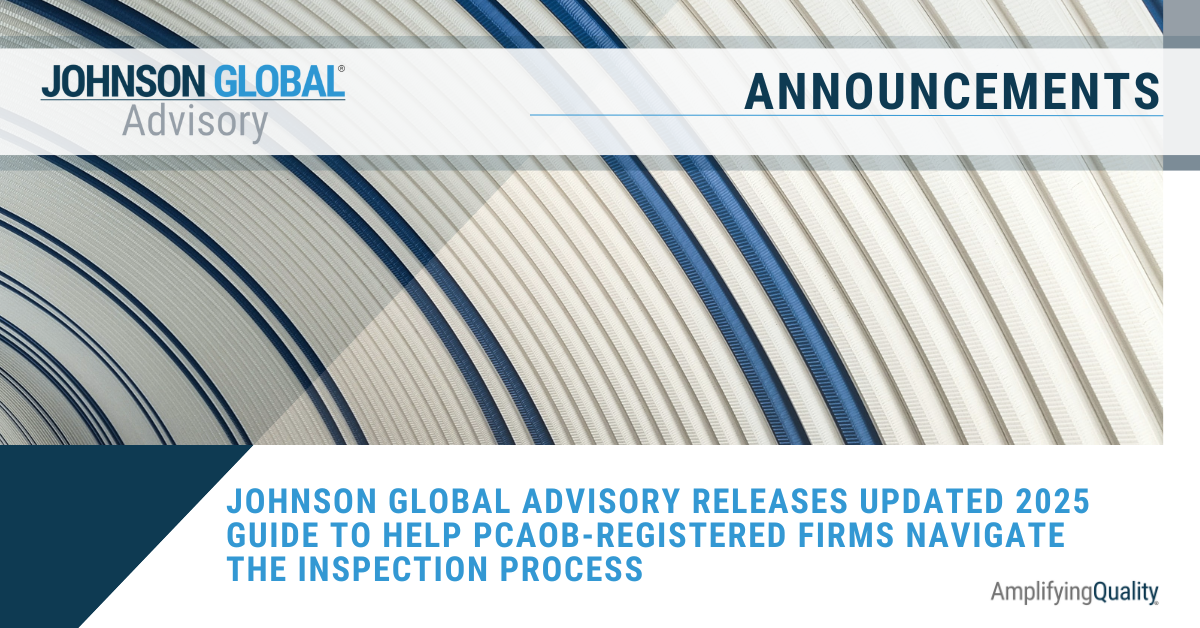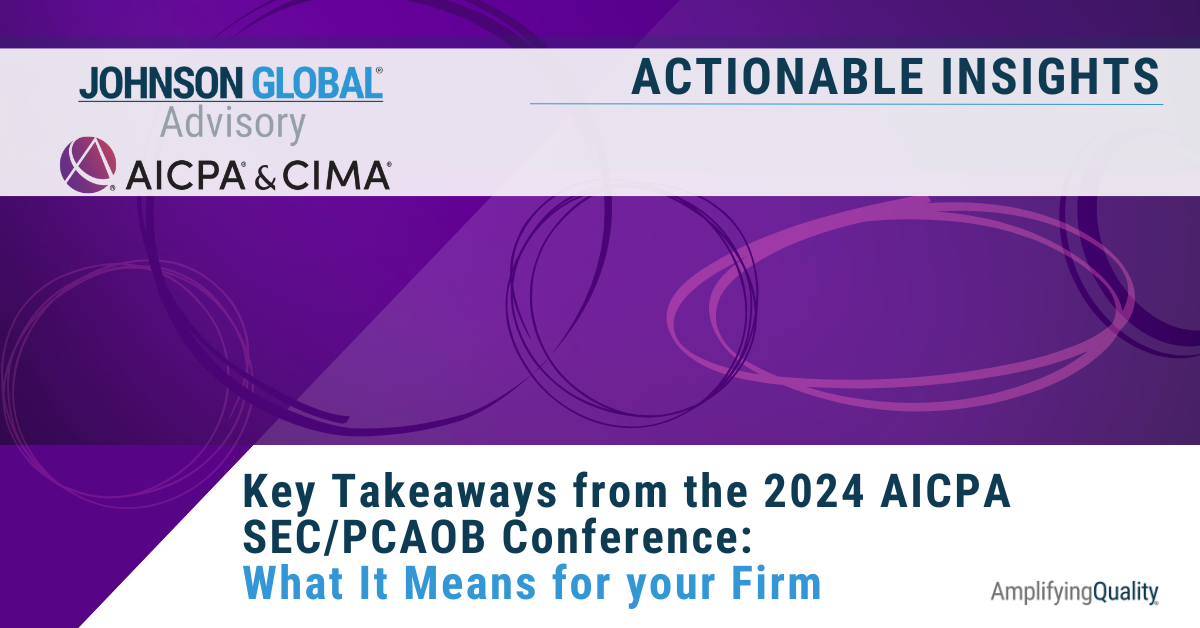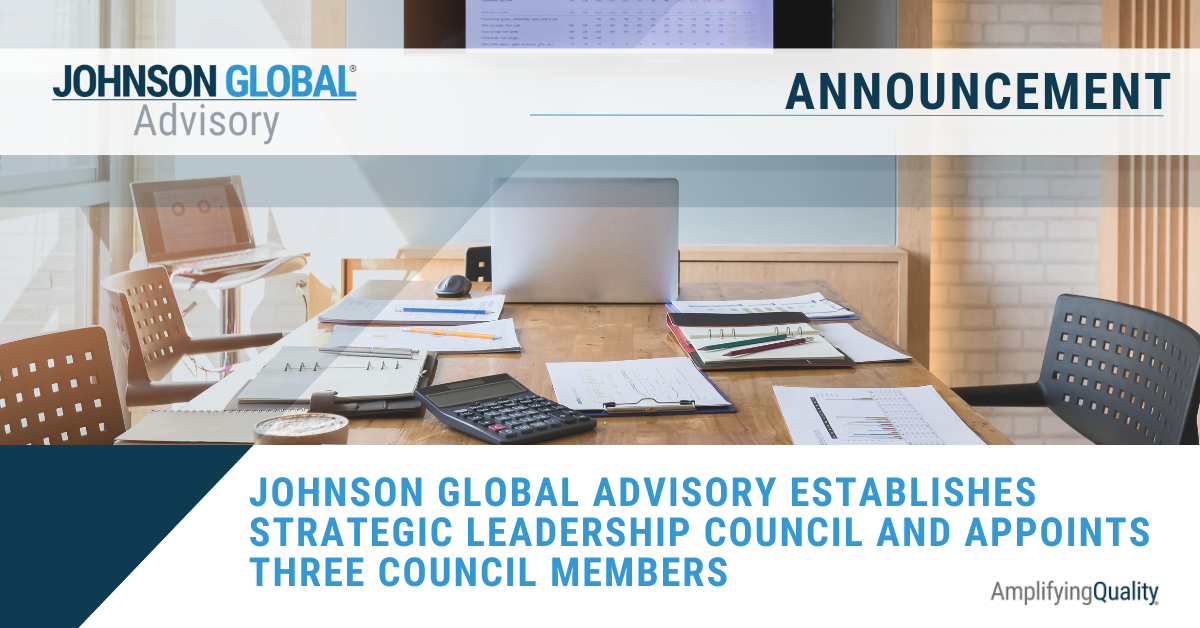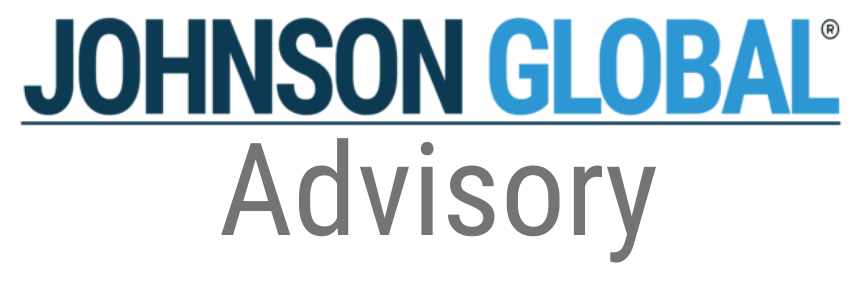Calamitous CAMs: Clarifying Critical Audit Matters

Despite being effective for several years now, the PCAOB’s guidance around critical audit matters (CAMs) still seems to confound many audit teams. Although inherent in the label “critical audit matter,” let’s first define this term. According to AS 3101: The Auditor’s Report on an Audit of Financial Statements When the Auditor Expresses an Unqualified Opinion states:
A critical audit matter is any matter arising from the audit of the financial statements that was communicated or required to be communicated to the audit committee and that: (1) relates to accounts or disclosures that are material to the financial statements and (2) involved especially challenging, subjective, or complex auditor judgment. (emphasis added)
The objective of the CAMs guidance is to provide investors with additional insight into some of the challenges within the audit. The CAMs guidance focuses on those items that are material AND that require challenging, subjective, or complex auditor judgment. The standard then goes on to provide guidance to engagement teams on how to identify and evaluate potential critical audit matters and provides specific disclosure and documentation requirements.
Though there is auditor judgement in the final determination of what constitutes a CAM, the process outlined in AS 3101 is fairly straightforward and the recurring comments identified by the PCAOB are often not related to the judgment applied in concluding on CAMs, but rather, around auditor’s failures to follow the CAMs guidance, as prescribed. Specifically, in its most recent inspection observations, the PCAOB cited that it continues to identify recurring issues with CAMs stemming predominantly from the following:
- Engagement teams failing to perform a complete evaluation over potential critical audit matters;
- Engagement teams failing to sufficiently disclose (in the audit report) the principal considerations that lead the auditor to determine the matter was a CAM; and
- Engagement teams failing to accurately disclose the audit procedures performed to address the critical audit matter.
As a former inspector, these types of issues are what we refer to as “low-hanging fruit.” Said differently, these are easy issues for the PCAOB to identify because they’re objective and don’t incorporate judgment; either the engagement team followed the guidance in the standard or they didn’t.
We provide further definition, insight on the effectiveness, and preparedness guidance for CAMs, in our initial JGA blog on critical audit matters here to supplement the information presented in this article.
Completeness of CAMs
The first major issue (which we have seen across the industry on clients of all sizes) is the completeness of the evaluation of potential CAMs. According to AS 3101, the guidance requires that the auditor document its evaluation of all matters that “[were] communicated or [were] required to be communicated to the audit committee” AND “relates to accounts or disclosures that are material to the financial statements.”
At first glance, this sounds easy enough. However, let’s not forget that there are extensive audit committee communication requirements, as outlined in AS 1301: Communications with Audit Committees. When starting to perform the CAM evaluation and analysis, many engagement teams default to the simple or more obvious communications such as the communication of significant risks and fraud risks, but if you dig into the guidance, audit committee communications incorporate much more than just the significant risks. For instance, engagement teams are required to communicate critical accounting policies and practices, critical accounting estimates, significant unusual transactions, new accounting pronouncements, and alternative accounting treatments, to name just a few. Many of these items will not be a significant risk and may feel routine or ostensibly non-complex, so auditors leave these items out of the CAM analysis. But if you go back to the guidance in AS 3101, these are required communications that typically relate to material accounts or disclosures, which means the evaluation of whether these are CAMs must be documented.
In working with teams through PCAOB inspections or through in-flight or other practice monitoring reviews, we often find that auditors are inherently performing the CAM analysis in their heads but they are not documenting the evaluation, as required. Yes, the A/R allowance might be non-complex, but it’s an estimate and is typically grouped in the accounting policies and/or critical accounting estimates footnote disclosures. This means it’s a required communication to the audit committee and if it’s material, the auditor is required to document its evaluation of whether it is a CAM.
To address this issue, we recommend that firms use a CAMs evaluation tool. A tool that is implemented across the public company audit practice will help ensure that all audit committee communications are considered. In addition, a tool will ensure that all considerations are consistently applied for all matters (e.g. material, challenging, subjective, or requires complex auditor judgment). If an item is not material, then the rest of the tool is relatively easy to complete. If it is material, then the tool will help guide teams in documenting its evaluation taking into account the relevant criteria (refer to AS 3101.12 for specific considerations). There’s no one right way to ensure the evaluation is complete, but a tool will ensure completeness of the potential CAMs and lays out the relevant considerations that support the engagement team’s conclusion on what is and is not a CAM.
Sufficiency of CAMs Disclosure
Once the auditors have concluded on what matters constitute a CAM, the next step is to draft the CAM disclosure language. The guidance in AS 3101 gives specific disclosure requirements including the following:
.14 For each critical audit matter communicated in the auditor's report the auditor must:
a. Identify the critical audit matter;
b. Describe the principal considerations that led the auditor to determine that
the matter is a critical audit matter;
c. Describe how the critical audit matter was addressed in the audit; and
Note: In describing how the critical audit matter was addressed in the audit, the auditor may describe: (1) the auditor's response or approach that was most relevant to the matter; (2) a brief overview of the audit procedures performed; (3) an indication of the outcome of the audit procedures; and (4) key observations with respect to the matter, or some combination of these elements.
d. Refer to the relevant financial statement accounts or disclosures that relate
to the critical audit matter.
While the PCAOB is not often challenging (or at least not taking issue with) the audit team’s conclusion of what constitutes a CAM, the regulator is taking issue with the sufficiency of the CAMs disclosures. Specifically, the PCAOB is finding that audit reports do not provide sufficient discussion around the principal considerations that support the auditor’s conclusion that a matter is a CAM. In other words, the key considerations that are documented in the CAMs evaluation template (i.e. what makes something especially challenging, complex, or subjective, requiring auditor judgment) are not making it to the audit report. The PCAOB has made abundantly clear that CAMs are not intended to use standardized language and that each CAM disclosure should be tailored to the specific audit. However, firms should have draft opinions that include the four bullets cited above so that when the CAM disclosure is drafted, it includes all items required to be disclosed. Again, the PCAOB is not challenging the judgment itself; they’re challenging the lack of disclosure evidencing the auditor’s judgement.
Accuracy of the CAMs Disclosure
In addition to the sufficiency of the disclosure, the PCAOB is also taking issue with the accuracy of the CAMs disclosure in the audit report. Specifically, the PCAOB is finding that CAMs disclosures often cite inaccurate procedures when discussing how the critical audit matter was addressed. Though we haven’t performed a root cause analysis, two of the main issues we’ve seen stem from the following:
- Use of boiler plate language: Some firms have drafted standard language for CAMs disclosures. These drafts are typically intended to provide an example. However, some teams don’t tailor this language and as a result, include irrelevant and/or inaccurate procedures.
- Use of CAMs from other audits: Similar to the boiler plate discussion above, some teams pull sample CAM disclosures from other audits and don’t tailor the language so that it is client specific.
- Drafting CAMs based on planned procedures as opposed to executed procedures: Many teams perform the CAMs evaluation prior to the wrap up the audit procedures. As a result, teams are drafting the CAMs, including referencing the procedures performed to address the critical audit matter, based on the planned audit approach. While we encourage accelerating the audit and applaud early completion of the CAMs documentation, it’s important that the final disclosure mirror the actual audit procedures performed.
Review and Supervision
Although templates and tools help guide teams through the analysis/evaluation and example CAM disclosures can help teams draft the audit report, let’s not forget the importance of the review process. Most firms already have multiple reviews in place for each opinion issued. Despite these elements, the PCAOB is still finding these non-judgmental issues. Thus, certainly, some element of these failures goes back to the timing and quality of the review and supervision.
When I perform inspections, one of the first things I do when reviewing CAMs is to reconcile the CAMs evaluation documentation to the list of significant risks (documented in planning), the planning/interim audit committee communications and the year-end audit committee communications. Often, because there are multiple drafts that go through various team and client reviews, I ensure I am looking at the final audit committee communications.
Similar to the CAMs evaluation tool, when I read the CAMs disclosure in the audit report, the first thing I do is a) reconcile the disclosure to the CAMs evaluation tool to ensure the relevant considerations giving rise to the CAM are adequately discussed in the audit report and b) review the relevant audit steps to ensure the procedures disclosed in the audit report represent the actual executed procedures.
Engagement teams, but especially managers, partners, and engagement quality reviewers should be performing more robust reviews to ensure the completeness of the CAMs evaluation tool and the sufficiency and accuracy of the CAMs disclosures, even if it means performing detailed reconciliations, as discussed above; this is exactly what the PCAOB is doing and if they’re finding the issues, a thorough internal review should also identify these matters. To facilitate these reviews, firms could consider developing a review template (i.e. similar to an EQR checklist) specifically asking about each requirement in AS 3101.
In addition, firms could consider implementing additional “targeted reviews” or require consultations over CAMs. This would ensure an extra layer of review on top of the engagement team, though for any review to be effective, it’s also important that sufficient time be built into the review process; nothing new here – it’s just a matter of planning appropriately.
In December 2022, the PCAOB released an interim analysis report discussing some of its findings around the effectiveness of the new CAMs guidance. Though the evaluation is still ongoing, the goal of the CAMs standard was to provide investors with more specific information related to the audit. That information is only as useful as it is complete and accurate. Thus, the PCAOB’s comments stem largely from the incomplete evaluation of CAMs and the inaccurate/insufficient disclosures related to CAMs. In this, the information age, completeness and accuracy are paramount, whether applying these principles to the data used in audit test work or to the relatively short audit report that sums up the entire audit conclusion.
Key Takeaways
- Consider developing a standardized CAMs evaluation tool that includes categories for all required audit committee communications. As part of review, perform a reconciliation from the CAMs evaluation tool to the audit committee communications and to the planning documentation.
- Review all CAM disclosures and ensure the disclosures mirror the relevant factors /considerations that lead to the auditor’s conclusion about a CAM.
- Reconcile CAM disclosures to the relevant audit workpapers, ensuring the procedures performed to address a CAM are accurately described in the audit report.
- Don’t underestimate the PCAOB’s attention detail. Managers, partners, and EQRs need to perform timely, detailed reviews over the CAMs evaluation documentation as well as the CAMs disclosures.
- As is always the case, document ANY and ALL judgments applied when evaluating critical audit matters.





